Time: Holiday.
Location: On the beach. Could be in the Caribbean, the Indian Ocean, or anywhere, really, as long as there’s soft white sand all around and a warm sea in near proximity.
View: See above. Actual view may vary, but only a tiny bit (e.g., the palm may be looking in another direction).
Action: Rolling slowly from one side to another, then on your back, then on your belly and… Repeat!
Aim: To roast, basically.
No. Try again…
Aim: To finally be able to say, when among smart people who discuss classic books from the you-must-have-read-this-otherwise-don’t-dare-call-yourself-educated list, “Oh yeah, I know what you’re talking about”… and not lie.
So here is our catalogue of beach books you should read, preferably on a beach.
The list (in alphabetical order, by the author’s last name):
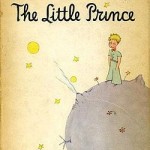
1. Antoine de-Saint Exupéry, The Little Prince (1943, Le Petit Prince)
“On ne voit bien qu’avec le cœur. L’essentiel est invisible pour les yeux,” (One only sees clearly with one’s heart. What is essential is invisible to the eye) says the Fox to the Little Prince. The Little Prince who recognises that the Pilot drew a snake that had eaten an elephant, not a hat, even if it looks like a hat. The Little Prince who lives on an asteroid with three volcanoes (two active, one asleep) and who falls in love with a rose only to realise that his is not the only rose in the world. Voted the best book of the 20th century in France, still sells millions and millions of copies worldwide.
2. F Scott Fitzgerald, The Great Gatsby (1925)
The Roaring Twenties were not as roaring for every American as we are often led to believe. Rather, it was the time the American Dream started to disintegrate. True, there was jazz and fun and unprecedented wealth and material excess, but there was also poverty and decline in values and unprecedented greed and lack of direction. Does this sound familiar?
3. William Golding, Lord of the Flies (1954)
This one is begging for a confrontational conversation with oneself: what would I do if I were there? How would I behave in this situation? Would the worst of my human nature appear on the surface? And just how bad is my worst?
4. Joseph Heller, Catch-22 (1961)
Thanks to this book, a new – and quite useful, sadly – phrase entered the English language. That is, of course, the Catch-22. According to Macmillan Dictionary, a Catch-22 situation is “a set of problems that is impossible to escape from because each problem must be solved first before you can solve any of the others.” So… Where do you start?
5. Ernest Hemingway, The Old Man and the Sea (1952)
Gregorio Fuentes was a Cuban fisherman and captain of Hemingway’s boat Pilar. He is thought to have been the Old Man in The Old Man and the Sea, for which Hemingway received the Nobel Prize for Literature. “Everything about him was old except his eyes and they were the same colour as the sea and were cheerful and undefeated,” Hemingway said of Fuentes. What Fuentes said of Hemingway will remain unknown – he is said to have said he’s never read the book.
6. Jack Kerouac, On the Road (1957)
“I read On the Road in maybe 1959. It changed my life like it changed everyone else’s.” — Bob Dylan.
7. Harper Lee, To Kill a Mockingbird (1960)
Lee won the Pulitzer Prize for this one. It’s set in the Deep South in the 1930s, when Jim Crow was still very much alive, and the Great Depression kicked in. The book is about compassion, empathy, and human strength to stand up against injustice. At first I was suspicious about the story being told from a child’s perspective – would it be too naïve? too simple? too childish? – but I was wrong. It was nothing like it. It was very good.
8. Vladimir Nabokov, Lolita (1955)
You may remember that Jeremy Irons and Dominique Swain were in the 2nd film adaptation of this book, and you might have even seen it. Either way, his name is Humbert Humbert, and she is Dolores Haze. He is a middle-aged man, and she is 12. In his fantasies, he calls her Lolita (hence, Lolita). The book is still controversial, and the name Lolita has become a generic term to describe sexualised girls.
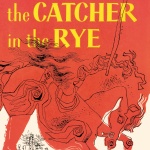
9. J D Salinger, The Catcher in the Rye (1951)
For a long time I wished Holden Caulfield was real, and that I could pick up a phone and call him whenever I felt like it. Perhaps he would have said something like this to me: “What I mean is, lots of time you don’t know what interests you most till you start talking about something that doesn’t interest you most. I mean you can’t help it sometimes. What I think is, you’re supposed to leave somebody alone if he’s at least being interesting and he’s getting all excited about something. I like it when somebody gets excited about something. It’s nice.” Indeed.
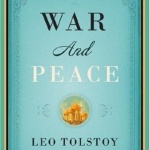
10. Leo Tolstoy, War and Peace (1869, Вoйнá и мир in Russian)
This one is epic. Perhaps it’s better to get its e-version, since it’s not only very, very long – it is also very heavy. But it’s a classic of classics, considered to be one of the best works of world literature, ever. It tells the story of five aristocratic families in tsarist Russia, from 1805 up until 1812, when Napoléon Bonaparte invaded Russia, only to be severely defeated. Tolstoy analyses power and history, and, obviously, war and peace.


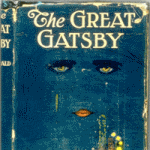
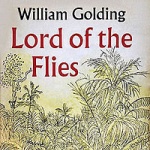

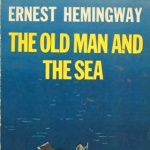
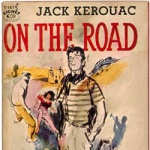


Leave a Reply
You must be logged in to post a comment.